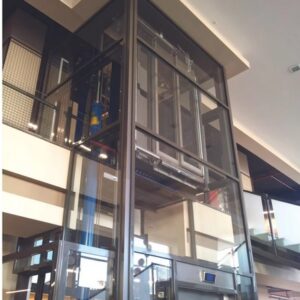Types of Commercial Elevators
Types of Commercial Elevators
Commercial elevators are designed for business spaces, ensuring smooth and efficient vertical transportation. Traction elevators are ideal for high-rise buildings, while hydraulic elevators work best in low-rise structures. Machine-room-less elevators save space, freight elevators transport heavy goods, and service elevators assist staff in hotels, hospitals, and commercial buildings.
Product Description
Types of Commercial Elevators
Commercial elevators play a crucial role in businesses, office buildings, shopping malls, hotels, hospitals, and other public spaces. They are designed to handle high traffic, ensure smooth vertical transportation, and comply with safety regulations. Different types of commercial elevators cater to various needs, including passenger movement, freight transportation, and accessibility. The main types of commercial elevators include traction elevators, hydraulic elevators, machine-room-less (MRL) elevators, freight elevators, and service elevators.
Traction Elevators
Traction elevators are among the most widely used in commercial buildings, particularly in mid-rise and high-rise structures. They operate using steel ropes or belts that pass over a traction sheave, driven by an electric motor. A counterweight system balances the weight of the elevator car, reducing energy consumption and improving efficiency. Traction elevators are available in two types: geared and gearless. Geared traction elevators use a gearbox to control movement, making them suitable for medium-height buildings. Gearless traction elevators, on the other hand, provide higher speeds and smoother operation, making them ideal for skyscrapers and high-rise hotels.
Hydraulic Elevators
Hydraulic elevators function using a hydraulic piston system that moves the elevator car by pushing hydraulic fluid into a cylinder. These elevators are best suited for low-rise commercial buildings such as retail stores, small office buildings, and clinics. They offer smooth operation and are easier to install since they do not require a deep shaft. However, they operate at slower speeds compared to traction elevators, making them less suitable for high-rise buildings.
Machine-Room-Less (MRL) Elevators
Machine-room-less elevators are a modern advancement designed to save space in commercial buildings. Unlike traditional elevators that require a separate machine room, MRL elevators have their motor and control system housed within the elevator shaft. This design reduces construction costs and increases efficiency. MRL elevators are commonly used in commercial buildings where space optimization is a priority, such as hotels, offices, and shopping malls. They offer energy-efficient operation and require less maintenance compared to traditional traction or hydraulic elevators.
Freight Elevators
Freight elevators are designed to transport heavy goods and materials within commercial and industrial buildings. Unlike passenger elevators, freight elevators have larger cabins, reinforced structures, and higher weight capacities. They are commonly found in warehouses, factories, shopping malls, and hospitals where transporting heavy equipment or bulk goods is necessary. Freight elevators operate at lower speeds to ensure the safe transportation of goods without sudden movements.
Service Elevators
Service elevators are similar to freight elevators but are designed to transport both goods and staff within commercial establishments. These elevators are commonly used in hotels, hospitals, and large office buildings. In hotels, service elevators help staff transport supplies without interfering with guest elevators. In hospitals, they are used for moving medical equipment, stretchers, and supplies efficiently between floors.













Reviews
There are no reviews yet.